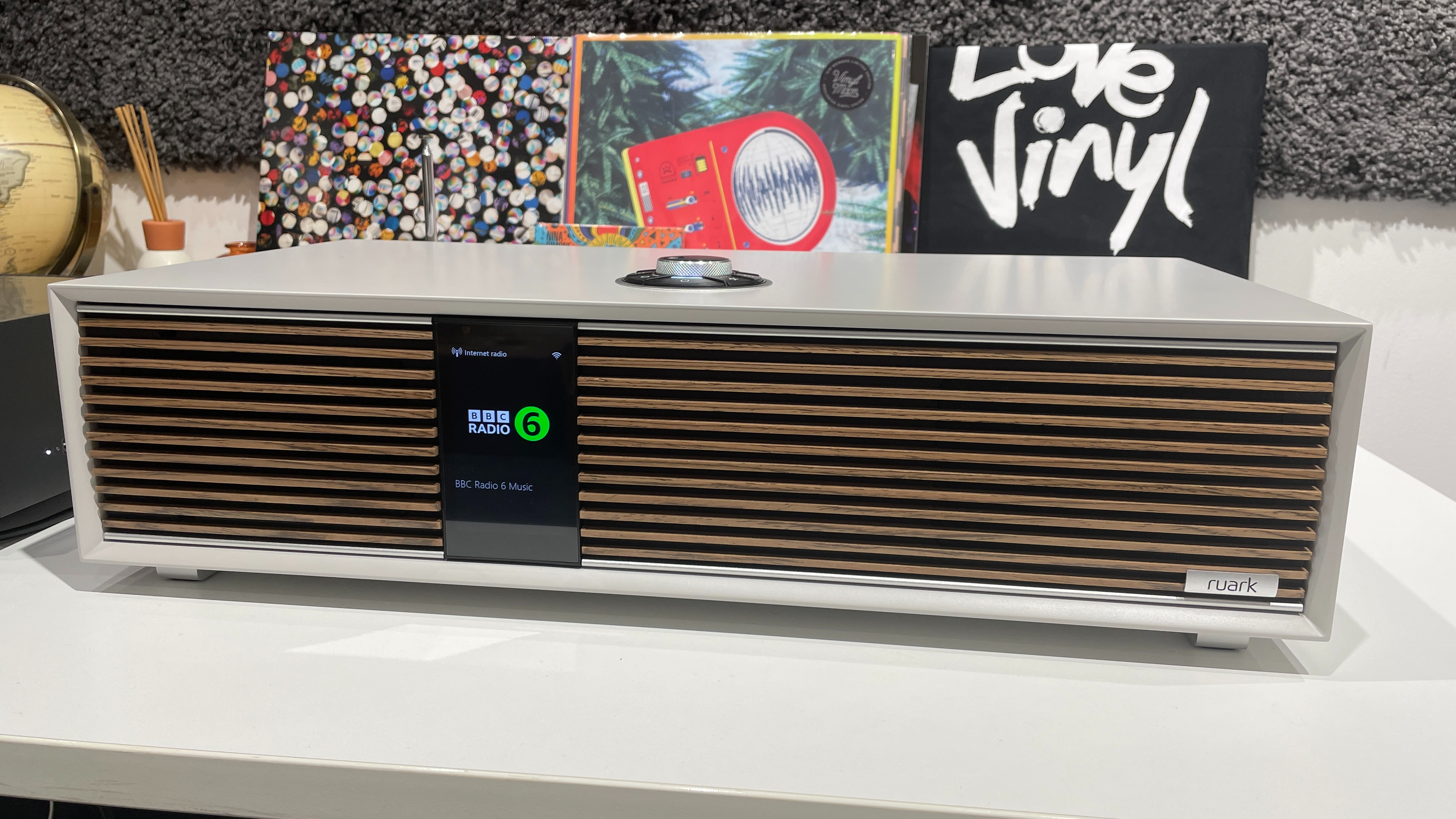What Hi-Fi? Verdict
A flexible, function-rich and great-sounding system that somehow manages to be a good-looking piece of furniture at the same time
Pros
- +
Robust, convincing sound from every source
- +
Extensive specification
- +
Stunning modern/retro aesthetic
Cons
- -
Can occasionally sound bass-happy
- -
Display could be larger
- -
No control app
Why you can trust What Hi-Fi?
The idea of the ‘music system’ never really went away – it just needed a moment to catch up with consumer requirements. Ruark Audio is the latest brand to toss its hat into the ‘all-in-one’ ring with this, the fully loaded, specified-to-compete R410. Have another glance at that picture – looks the part, doesn’t it? So as long as it has the performance to match, the likes of Naim should be glancing rather nervously over their shoulders…
- Ruark Audio R410 vs Naim Mu-so 2: which all-in-one music system is better?
Price
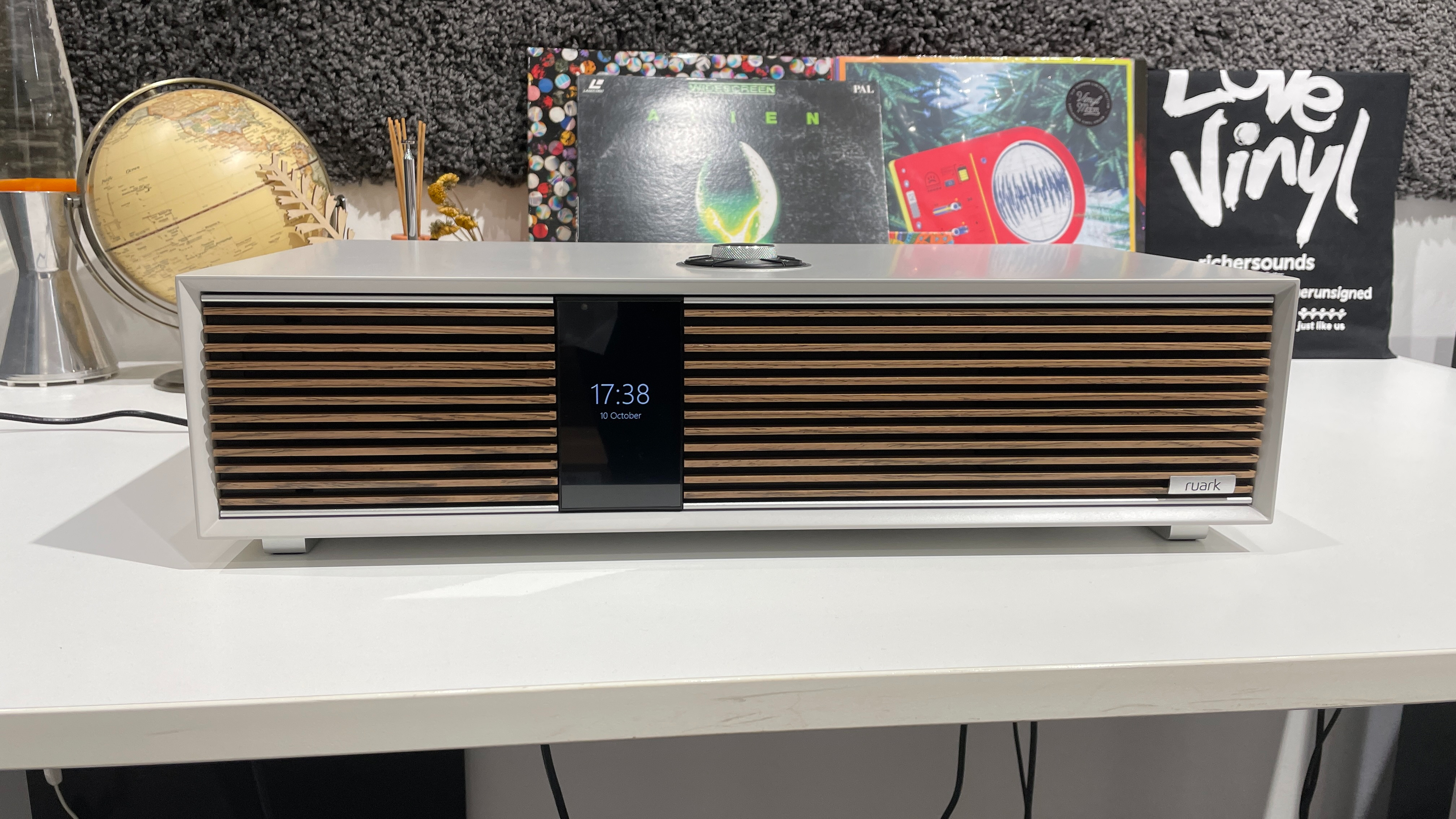
The Ruark Audio R410 all-in-one system is on sale now and as you might have discerned, it is a rather premium system. In the United Kingdom it’s priced at £1299, in the United States you're looking to spend $1699, while those in Australia can expect to pay AU$2599. Budget, it ain't.
In any currency, though, this puts the R410 up against some pretty formidable all-in-one competition. They may not have exactly the same form-factor, but everything from the Technics SA-C600 (£899, just add speakers) and the KEF LSX II (£1099, entirely speakers) to the Naim Mu-so 2 (£1149) and the Sonus Faber Omnia (£1599) is ready to offer you a viable alternative. Ruark Audio by no means has this particular field clear.
Design & build
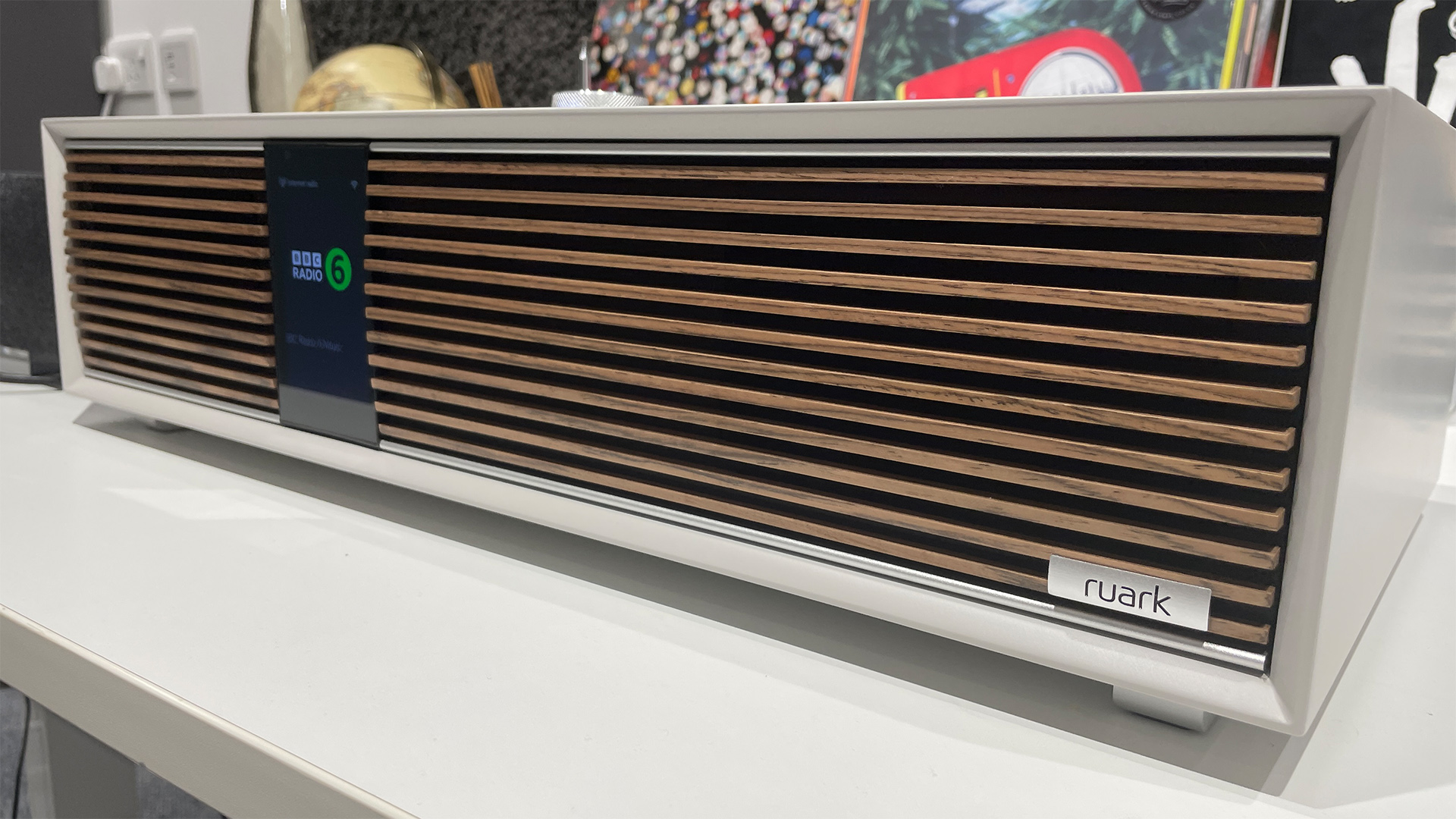
Ruark Audio has worked its specific magic with the way the R410 looks. Those 15 x 56 x 29cm (hwd) dimensions are just correct, somehow, and the aesthetic is familiar. From the little metal legs on which it stands to the trademark vertical wooden slats that constitute a grille, this is a product with a confident, coherent look – and while beauty is in the eye of the beholder, it seems fair to say the R410 will find favour with any number of interior decorators and/or set-dressers.
Get up close and the good news keeps on coming. Build quality is exemplary, and the ‘fused’ walnut veneer is both elegant and unusual. It’s engineered from sustainable woods, and then spliced, coloured and recomposed. The result is a consistent grain pattern and a resistance to colour change over time, and consequently a finish that’s admirable both on a visual and a tactile level. If this is all a bit too much wood for your particular taste, Ruark Audio offers an equally successful, if slightly less unusual, ‘soft grey’ finish (such as our review sample) as an alternative.
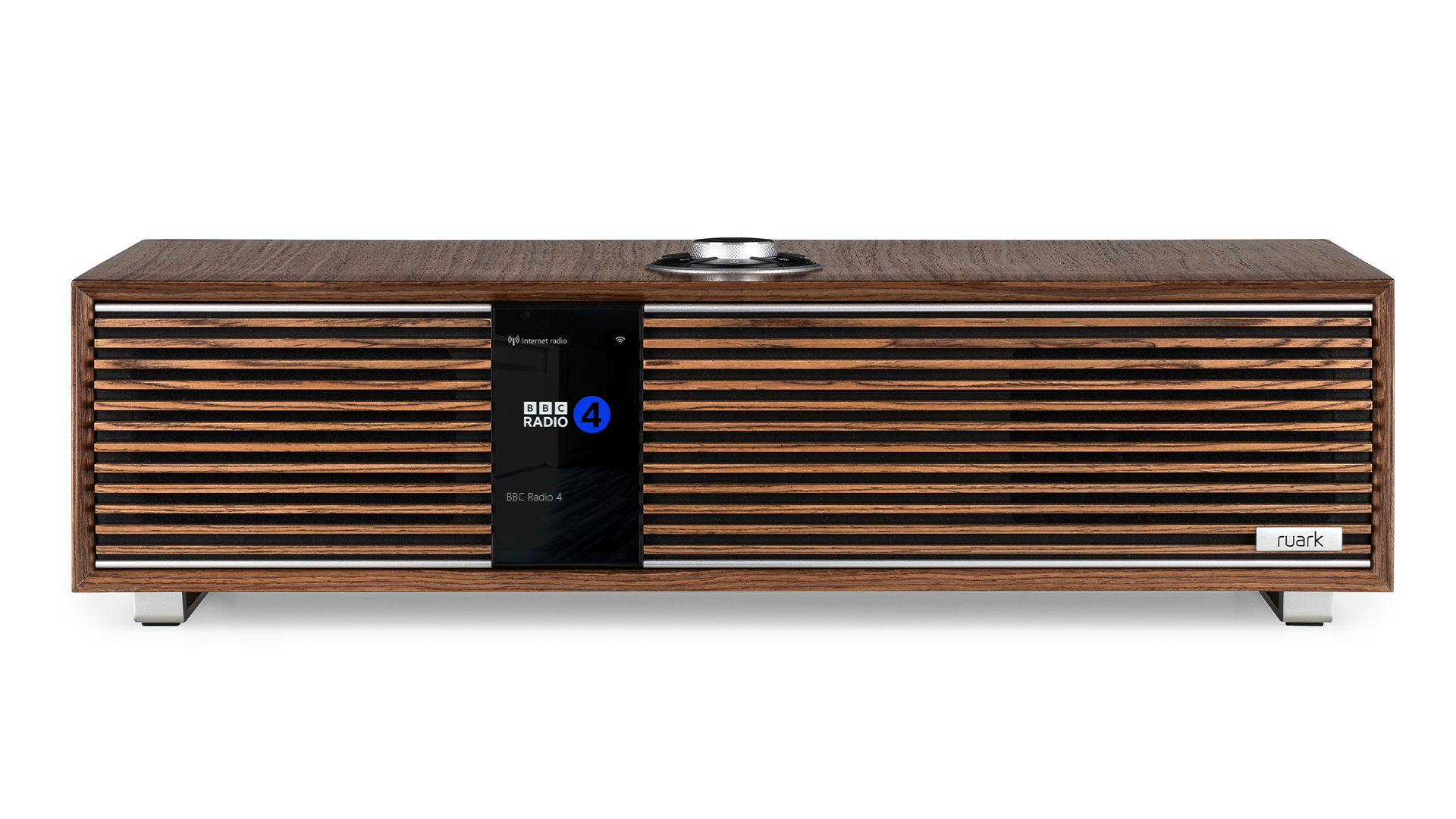
Power 120 watts (Class D)
Inputs HDMI eARC; moving-magnet phono; line-level phono; digital optical; USB-C; Ethernet
Sources Wi-fi; Bluetooth 5.1; Apple AirPlay 2; Chromecast; Spotify Connect; TIDAL Connect; UPnP; FM; DAB; DAB+; internet radio
Max hi-res support 32-bit/384kHz
Finishes x2
Dimensions (hwd) 15 x 56 x 29cm
Weight 9.5kg
The interface options available here are all well implemented – but there could, perhaps, be more of them. The top of the cabinet features Ruark’s familiar RotoDial controller; it covers all major functions, feels nicely weighted and is simple to operate. The R410 also comes with a second RotoDial – it’s identical to the integrated control, but it’s portable and can be recharged via USB-C. As remote controls go, it’s as pleasant to hold and operate as they come.
A product as feature-heavy as this needs quite extensive menus, of course, and here they’re accessed via the 102mm (4-inch) colour TFT display on the R410’s front panel. This ‘portrait’ configuration that splits the fascia grille is bright, crisp and high-resolution, but it’s a tad on the small side. As a consequence, you need to be quite close to it to find out what’s what, as the font, while nice to read, is necessarily titchy.
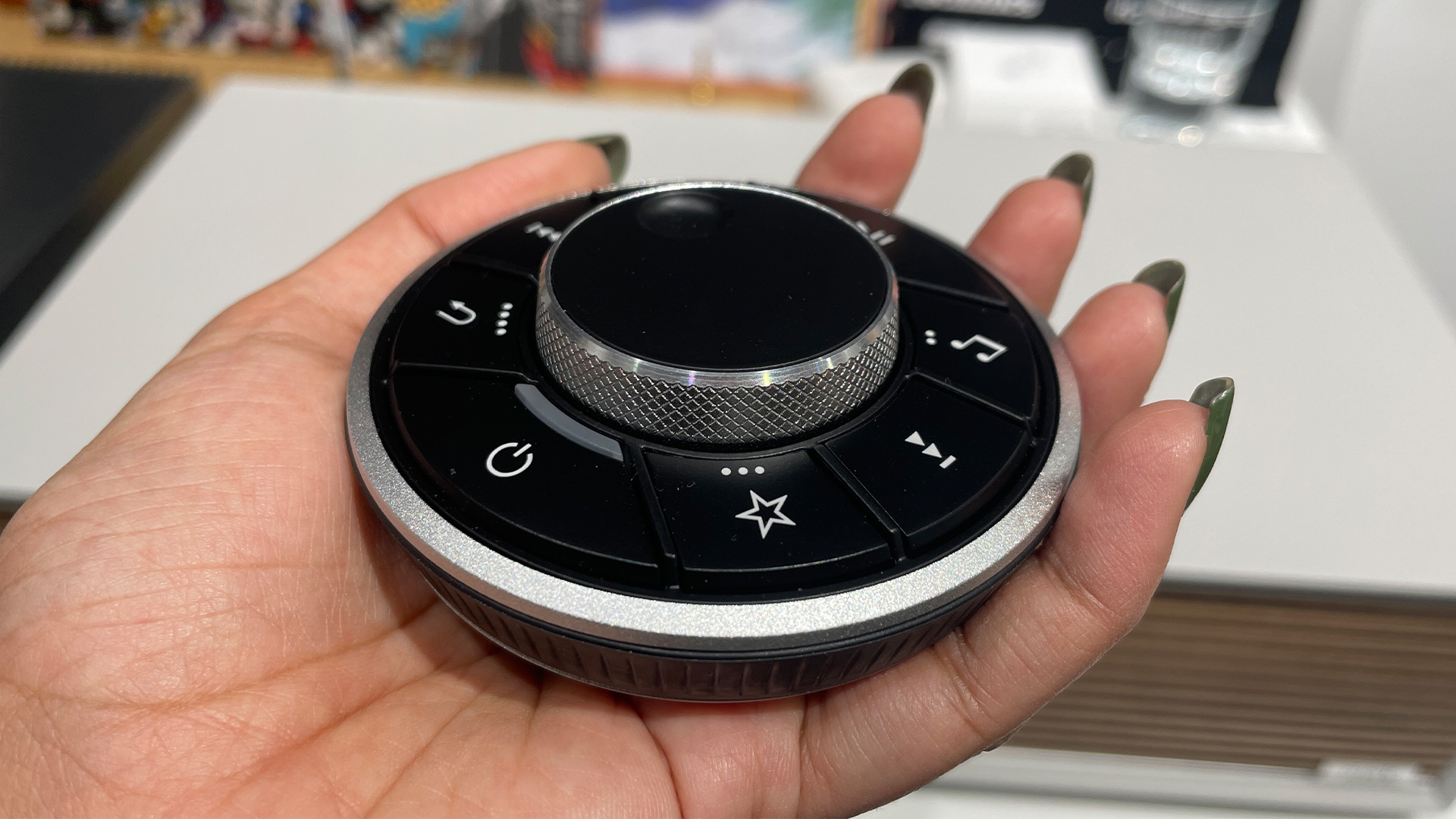
A control app would help in this respect, but the R410 goes without. The argument that says wireless sources can be controlled from your smartphone or tablet (and will probably have apps of their own), and that wired sources can be operated as much as is possible from one of the two RotoDial controls, is fair enough.
But customers with this sort of money to spend might well imagine a control app into which they can integrate all their favourite streaming services and what-have-you would be part of the deal. After all, it is with equivalent products from KEF, Naim, Technics and plenty of other rivals…
Features
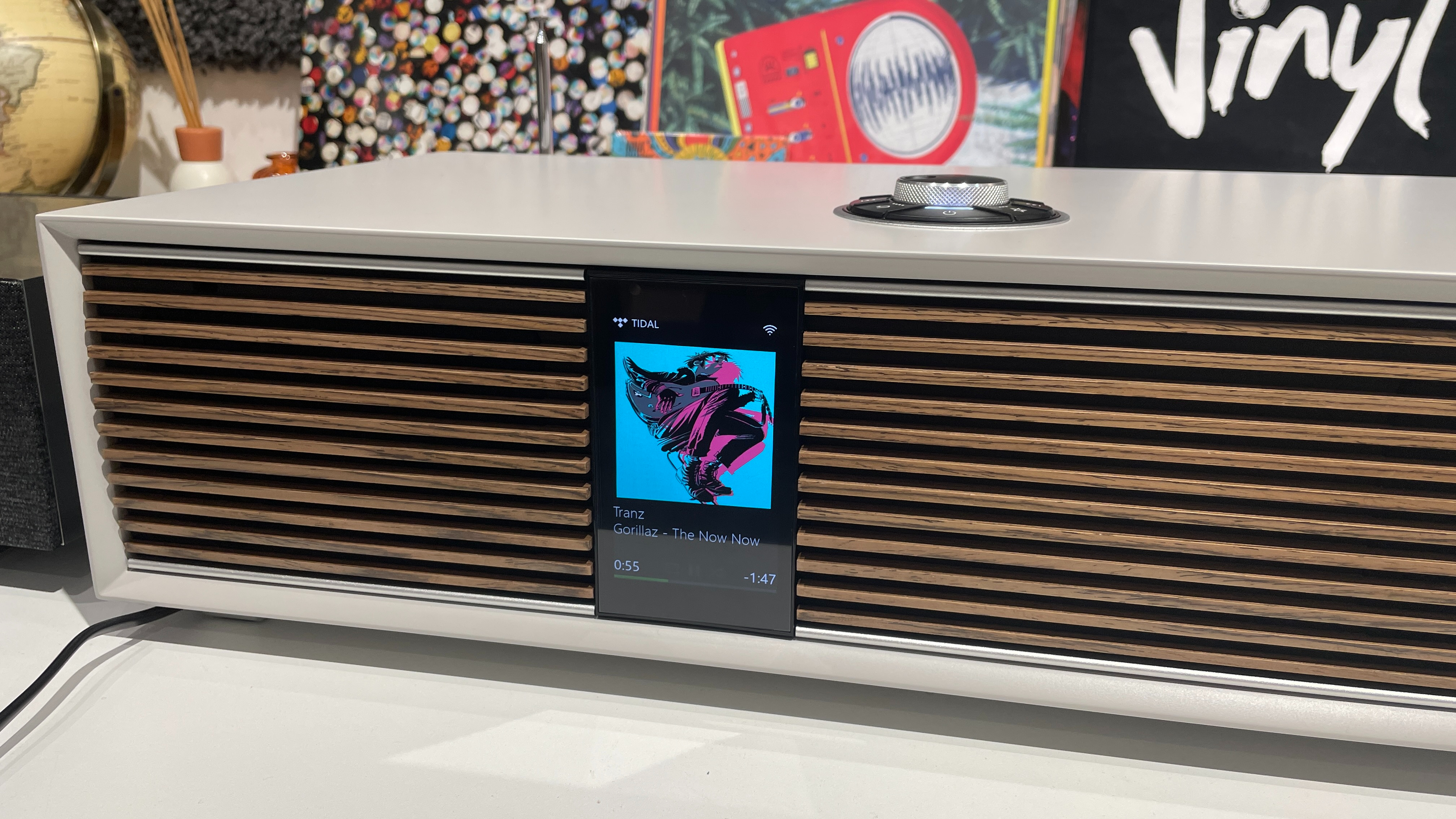
Did anyone mention ‘flexibility’ or ‘extensive functionality’? Yes? Well, that’s handy – because the Ruark Audio R410 is loaded with both.
As far as wireless connectivity is concerned, there are plenty of options. The R410 has Bluetooth 5.1 on board, and it’s compatible with SBC, AAC and aptX HD codecs. There’s dual-band wi-fi, too, giving access not only to the ‘Connect’ versions of Spotify and Tidal, Apple AirPlay 2 and Chromecast, but also to network-stored content via UPnP. Ruark has a rich history with radios (such as the superb Ruark R2 Mk4) and so we can expect FM, DAB/DAB+ and internet radio to come as standard.
There’s an aerial to facilitate radio reception on the rear of the R410, and that’s also where you find all the physical connections. There’s an ethernet socket, naturally, and a pair of stereo RCA inputs operating at line level. There’s another pair of RCAs leading to a moving magnet phono stage – so your turntable can get involved. An HDMI eARC input means the R410 can take audio information from your TV, so your home cinema and/or television sound can get a significant boost too. There’s a digital optical input, and a USB-C input too, and a pre-out for a subwoofer for good measure.

No matter which of the very many options you use to get your audio information on board, it’s examined by a 32-bit/192kHz high-resolution digital-to-analogue convertor (or, at least, the digital audio information is). It’s then amplified by a total of 120 watts of Class D power – this is a bit of a departure for Ruark Audio, which ordinarily prefers the less efficient Class A/B alternative for its hardcore hi-fi credibility.
From here, it’s delivered to you via a pair of 20mm silk dome tweeters (these are carried over from the Award-winning MR1 Mk2 desktop speakers and anyone familiar with that product will know this is the opposite of ‘a bad thing’) and a couple of brand new 10cm paper cone mid/bass drivers. Low-frequency reinforcement is provided by two bass reflex ports on the bottom of the cabinet (a position that means they’re always an ideal distance from a fixed boundary). This results in a frequency response (according to Ruark Audio, at least) of 30Hz - 22kHz – which means ‘extremely deep’ to ‘very high indeed’.
Sound
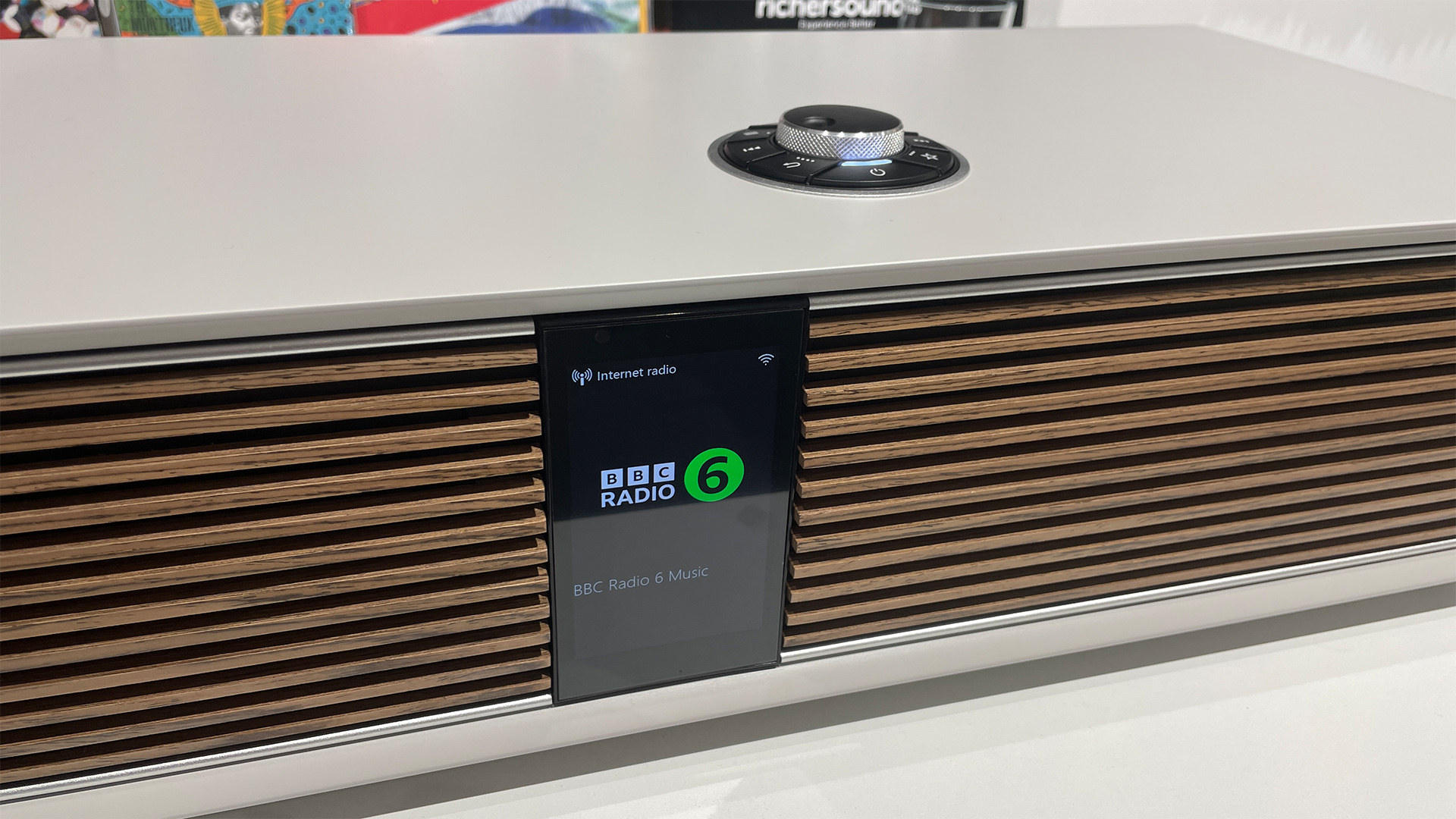
It’s one remove from what you might immediately think of when we’re discussing ‘sound’, but nevertheless it’s worth noting just how consistent the R410 is. Naturally there are qualitative differences between the same song heard as a 320kbps Bluetooth stream, through the moving magnet phono stage or as a hi-res audio file accessed from some network-attached storage – but no matter the source, the sonic characteristics remain consistent throughout. And that holds true no matter the volume level at which you’re listening. These things are never a given, no matter how much money your all-in-one system costs.
The specifics of those characteristics are just as agreeable. The R410’s tonality is fairly even from the top of the frequency range to the bottom, and quite neutral and naturalistic throughout. Straight from the box, with its EQ settings left alone, the frequency response is a little slanted at the bottom end – the presentation is rather happily bassy, and the fact that the low-frequency presence is well-controlled and nicely straight-edged doesn’t alter that fact. Getting into the menus and knocking a couple of dB off the ‘bass’ output evens things out, though.
Give the R410 some well-recorded and accomplished vocals to deal with – David Bowie’s ‘Tis a Pity She Was a Whore, for example – and it’s capable of an eloquent, insightful midrange performance. Detail levels are high, as they are across the entire frequency range, and the Ruark gives singers a very pleasant sense of directness and positivity. The soundstage the system creates isn’t, in the final analysis, the most expansive a system like this ever served up – but because it’s so well-organised and coherent, it allows vocalists enough space in which to stretch out and properly express themselves.
At the top of the frequency range, the R410 is apparently involved in a game of ‘chicken’. Treble reproduction is absolutely as bright and crisp as is advisable, but because the top end has plenty of substance to go along with its brilliance, it just about stays on the right side of ‘edgy’ or, even worse, ‘hard’. Treble sounds are never less than enthusiastic, though – the R410 attacks the top of the frequency range with something approaching relish. The customary levels of detail and insight are apparent, and – just as there is across the entire frequency range – there’s good second-stage harmonic and dynamic variation on offer.
Despite the numerous drivers here, aided and abetted by those bass reflex ports, there’s no obvious sensation of cross-over. The R410 knits the frequency range together well and offers a genuine sensation of unity and singularity to its sound. The overall sound is positive and confident, without being in any way brash or overly assertive – there’s decent momentum to the sound, and good rhythmic expression thanks to the relative amount of low-end control on show.
It’s perhaps not the most dynamic sound you've ever heard, mind you. There’s always a distance to be travelled between the quietest, most contemplative moments of a recording and its loudest, most intense sections, of course, but that distance just doesn’t seem especially far where the R410 is concerned. The difference between ‘quiet’ and ‘LOUD’ is apparent, of course, but perhaps not as pronounced as it might be.
That’s not to imply the Ruark isn’t capable of quite oppressive volume levels, you understand. ‘Room-filling’ is not too mild a description of its talents where out-and-out volume is concerned – which, for some listeners at least, will be reason enough to buy one in the first place.
Verdict
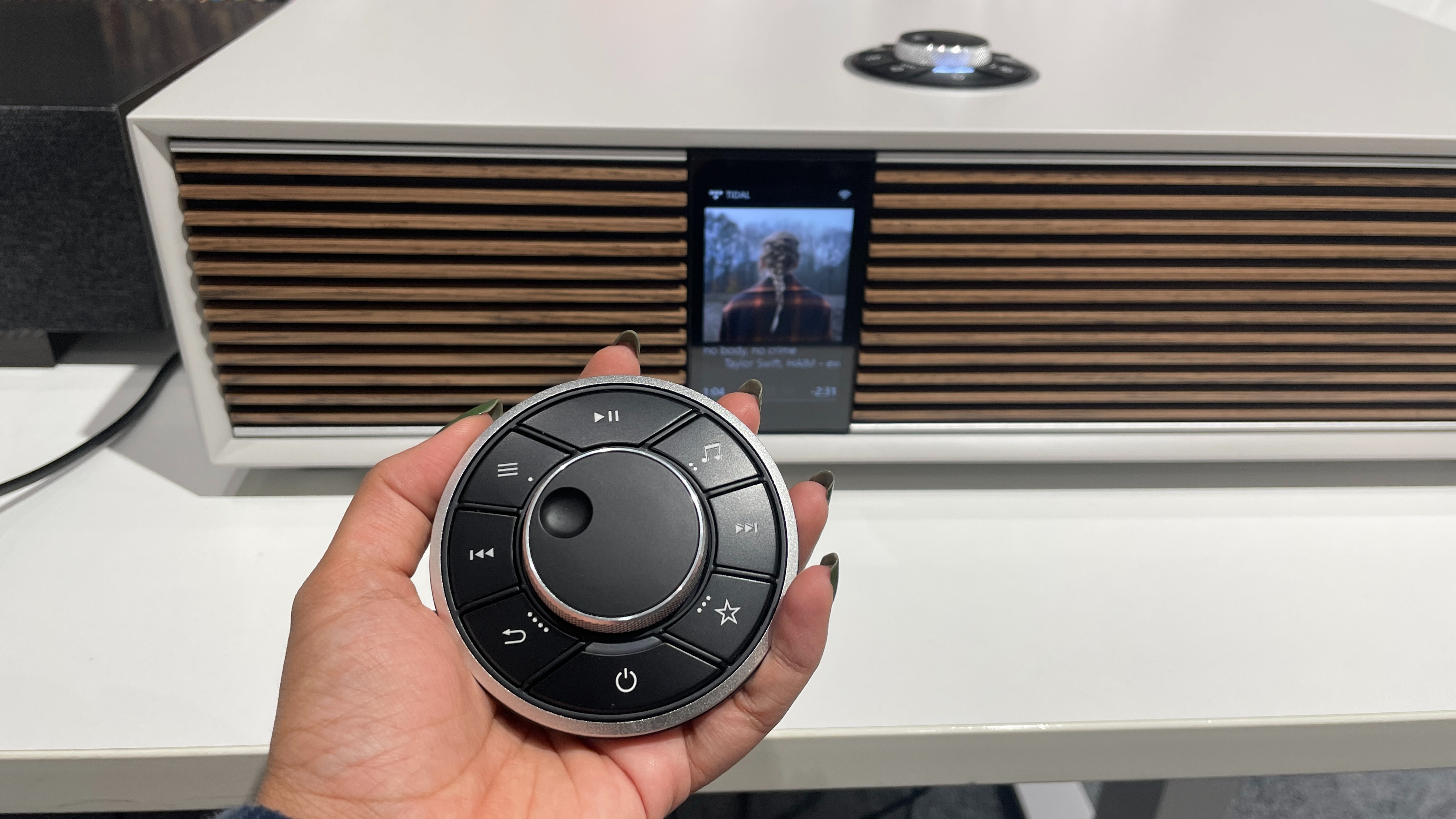
The Ruark Audio R410 is a success, to a lesser or greater extent, in every respect. As an object, a piece of furniture, it’s brilliantly realised. As a flexible, function-rich piece of audio equipment, it is hard to find fault with (except for the absence of a control app, of course). And in terms of the sound it makes, there’s an awful lot to like, not least its eloquent, direct and balanced presentation – and next-to-nothing to take issue with. It’s a fearsomely competitive product, and represents money well spent.
SCORES
- Sound 5
- Build 5
- Features 5
MORE:
Read our review of the Naim Mu-so 2
Also consider the Sonus Faber Omnia
Ruark Audio R410 vs Naim Mu-so 2: which all-in-one music system is better?
Best hi-fi systems: CD, vinyl and streaming music systems for the home
What Hi-Fi?, founded in 1976, is the world's leading independent guide to buying and owning hi-fi and home entertainment products. Our comprehensive tests help you buy the very best for your money, with our advice sections giving you step-by-step information on how to get even more from your music and movies. Everything is tested by our dedicated team of in-house reviewers in our custom-built test rooms in London, Reading and Bath. Our coveted five-star rating and Awards are recognised all over the world as the ultimate seal of approval, so you can buy with absolute confidence.
